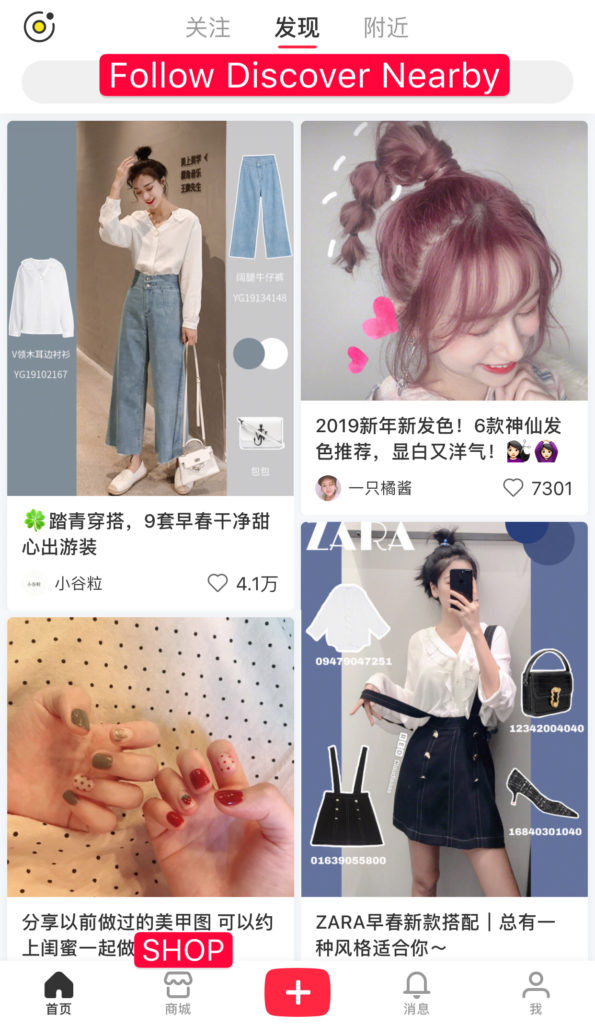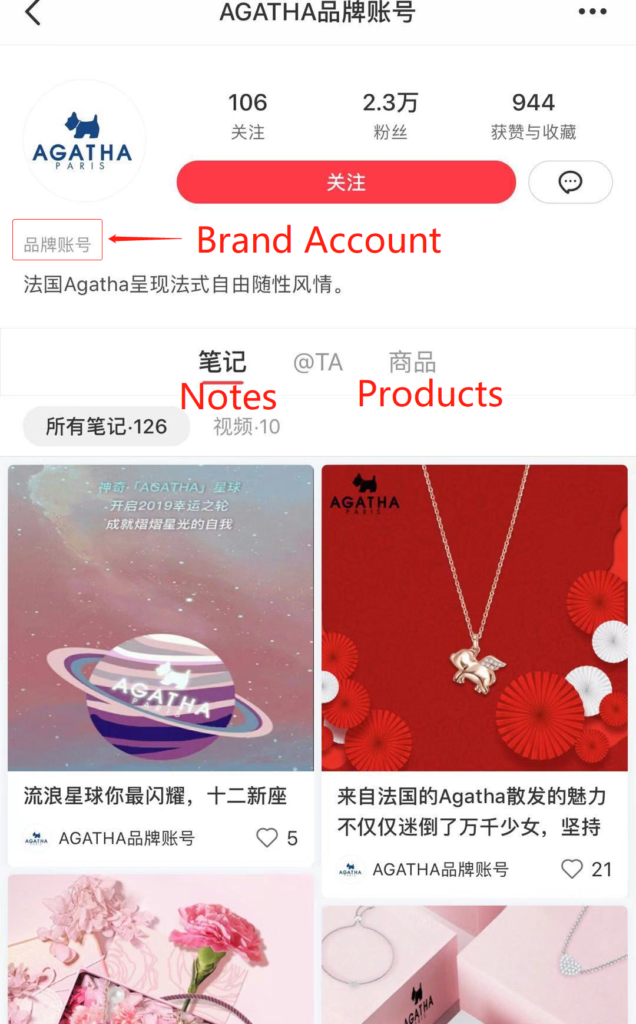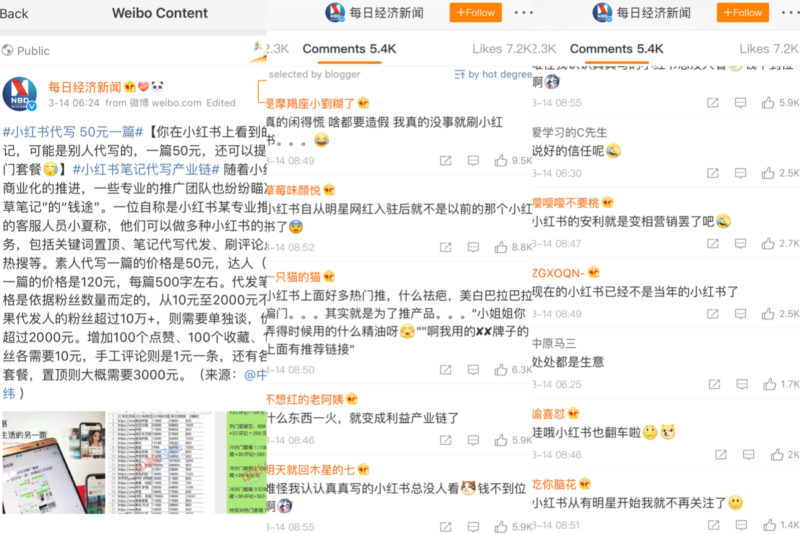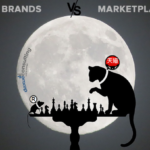Xiaohongshu is becoming a giant in both social media and e-commerce | Daxue Consulting
Latest facts and insights about Xiaohongshu (Little Red Book) 2019.
Social media platforms like WeChat and Sina Weibo, as well as e-commerce marketplaces like Taobao, are no strangers to foreign marketers. Compared to these well-known names, Xiaohongshu (小红书, also known as Little Red Book or RED) is relatively less talked about. In this insights report, Daxue Consulting will provide you with the most recent facts about Xiaohongshu, along with the Chinese netizens’ attitudes towards it. Additionally, we prepared a list of takeaways for international companies, who are leveraging or planning to use Xiaohongshu to engage Chinese consumers.
1. First of all, what is Xiaohongshu?
According to its official website, Xiaohongshu is a lifestyle sharing platform. The company was founded by Mao Wenchao and Qu Fang in 2013. Xiaohongshu reached over 200 million registered users in Jan. 2019, with the post 90s generation being the most active user group. It allows users to share short videos and photos about fashion, beauty, food, travel, and much more.
Xiaohongshu is one of the fastest growing mobile platforms. According to its co-founder, Qu, the number of monthly active users (MAU) doubled between the end of 2017 and the middle of 2018, reaching 30 million. The total number of registered users doubled between May 2018 and Jan. 2019. Xiaohongshu users are predominately young and female; a significant part of them are living in China’s first and second-tier cities. As a matter of fact, they are getting even younger, “70% of new registered users were born after 1995.” Said Qu in an interview in 2017, “and in addition, the user base is also slowly stretching into the lower tier cities.”
Although Xiaohongshu describes itself as a content-oriented social platform, it has already become a hybrid of Chinese social media and e-commerce. On June 6, 2017, Xiaohongshu held a shopping festival to celebrate its fourth anniversary and the sales revenue exceeded 100 million RMB (around 14 million USD) in only two hours.
2. The evolution of Little Red Book
From a shopping guide to a community to e-commerce

[Source: Daxue Consulting “Xiaohongshu Evolution”]
It all started in Hongkong, one of the favorite overseas travel destinations for Chinese people. Despite the western ambiance and exquisite Cantonese cuisine, one of the main purposes of travel was shopping. Yet, due to the language barrier and lack of knowledge about foreign brands, many Chinese travelers were asking the questions, “Which handbag should I buy as my first luxury item? Which skin moisturizer is worth a try? How can I do a tax-refund?” Xiaohongshu co-founder Mao saw that information gap and started the first version of Xiaohongshu – Little Red Book Hongkong Shopping Guide – offering shopping-related information for mainland Chinese consumers from those who traveled or lived in Hongkong.
Chinese consumers do thorough pre-purchase research, especially for overseas products!
A couple of months later, more and more user-generated content about shopping overseas had been shared and it was not only limited in Hongkong. Shopping experiences in other countries such as Thailand, South Korea, and Japan were also being exchanged and discussed on the platform. Seeing that, the company decided to adapt the name to Little Red Book Shopping Notes. After obtaining all the knowledge about foreign brands and “window shopping” the products from all over the world, Xiaohongshu users were eager to purchase the goods they have learned about. Late 2014, Xiaohongshu e-commerce was established. That was how the app became the Xiaohongshu we know now – a social platform/e-commerce hybrid.

[Source: Daxue Consulting “Xiaohongshu interface”]
When you open the app on your phone, there are three buttons on the top of the screen: Follow, Discover, and Nearby. Follow allows users to keep up with the content from accounts they are following. With Discover, you can explore “random” content generated from all kinds of Xiaohongshu users. Under the Nearby section, content from users near your location will be shown. It is especially practical when the users are on a trip, they can easily discover shopping spots, good restaurants or anything interesting close to them in a foreign city.
At the center bottom, you find a big “+”, which encourages users to generate and share their own “notes”. On the left side of the plus sign, you can directly go to the shopping platform of Xiaohongshu.
The value of Little Red Book (RED) app in the daily life of Chinese consumers
Users often search for reviews and recommendations on RED before they make purchasing decisions. Some people simply use Xiaohongshu for “window shopping”, searching for fashion inspiration for things like clothing and hairstyles. Xiaohongshu has become a very important step for many Chinese consumers’ pre-purchase journey. Moreover, it has become a leisure time activity of many young women in China to browse the app and let themselves getting inspired and entertained by something new, funny or glamorous.
CONTACT US NOW TO ANSWER YOUR QUESTIONS ABOUT BUSINESS IN CHINA
3. To leverage Xiaohongshu for international brands
Official brand account, Influencer collaboration, Xiaohongshu marketplace
There are two options to leverage Xiaohongshu for foreign brands: firstly, as a social platform to improve brand visibility and interact with potential consumers; secondly, as a cross-border e-commerce marketplace to sell products.

[Source: an official account from French brand AGATHA on Xiaohongshu]
Similar to famous platforms like WeChat and Weibo, to set up an official brand account on Xiaohongshu is also possible for foreign companies. Companies need to submit various documents such as business registration for verification and depending on the product category, required documents can be different.
On the brand homepage:
- Little Red Book users can browse the “notes” the brand posted;
- It also shows the posts from other users when they mentioned (@) the brand in their own notes, this feature helps to strengthen the relationship between the brand and consumers;
- If the brand’s products are also available on Xiaohongshu’s marketplace, consumers can simply click on “Products” to browse the list of goods. From the product description, consumers can directly go to the brand’s Xiaohongshu store.
3.1 Pros and cons of setting up an official store on Little Red Book (RED)
There are a couple of advantages to setting up an official online store on RED: lower startup costs and a less complicated procedure compared to Taobao or JD.com. In addition, after Alibaba invested in Xiaohongshu last year (2018), we can already see some integration between these two platforms, e.g. Xiaohongshu posts appear in the reviews section of a product on Taobao. We definitely can expect more partnership in the future. The disadvantages of setting up an official store on Little Red Book can be the smaller range of consumer reach compared to bigger Chinese e-commerce platforms and the high commission charged on brands.
3.2 Working with KOLs: Online influencers in China
Even if a brand has neither an official account nor a shop selling its products on Xiaohongshu, it could still be very beneficial to leverage this app to engage Chinese consumers. Working with KOLs is crucial in China since Chinese consumers assume that online influencers are more trustworthy than “official” ads; that makes a positive word of mouth more impactful in China than in the West. If you decide to collaborate with a KOL, find the right person, whose image is compatible with your brand and whose followers are your target groups. The simplest way to reach out to a KOL is by sending them free samples of your product. Regarding the KOLs’ classification and costs, following analysis from Daxue Consulting can be helpful as an orientation. (Click on the link to view the full report about Chinese KOLs)

[Source: Daxue Consulting “Working with KOLs in China”]
4. RED: Is Content becoming money driven?
RED’s success is largely due to its content-driven nature. No matter it is the latest fashion trend, the new lipstick color from a beloved brand or a mystery travel destination, Little Red Book users want to learn more about it. Instead of formal source of information, Chinese consumers would rather discover it by themselves on social media. Often times, when a Chinese consumer hears about an interesting brand or product for the first time, he/she will check it out on Xiaohongshu. Buyers will check product reviews on the platform, which will influence the likeliness of purchasing the product. If it is already available on the Xiaohongshu marketplace, they will immediately add it into the shopping cart within the app. If not, users can share the links to products in the Xiaohongshu post directly or in the comment section.
However, as a former social media platform, becoming a better e-commerce marketplace could still be a big challenge for Xiaohongshu. Although many consumers have experienced huge convenience shopping on the App, there is also the voice of criticisms online. Some of them are accusing Little Red Book of providing fake content or even selling fake products. A recent hashtag on Weibo – #Xiaohongshu ghostwriting 50 RMB/post# – has caused huge responses among Chinese netizens. This post revealed a price list for various service packages, according to the source, an “ultimate hitting the top” pack providing 8888 likes with 8888 times “saving as favorite” and 50 comments on Xiaohongshu would cost 1388 RMB (around 200 USD). Just within a couple of hours, this post had thousands of comments. The top comments expressed their disappointment and many of them agreed that Xiaohongshu is no longer the Xiaohongshu it used to be. “After celebrities also opened their accounts and made recommendations on Xiaohongshu, I don’t use the app anymore.” Says one top comment. Nevertheless, lots of netizens claiming still love to use Xiaohongshu for different purposes: Some search for recipes, others want to find out how certain clothing or fashion accessories look on a real-life girl rather than a model.

[Source: Screenshots of Weibo post regarding content ghostwriting on Xiaohongshu (Mar. 14th, 2019)]
5. Is Xiaohongshu the right place for your brand?
Daxue insights for foreign brands:
-
- Make sure your target group in China is compatible with Xiaohongshu users, which can be basically described as young affluent women living in the urban areas. However, this may be different in the near future because of the increasing number of users in low-tier cities.
-
- Compared to “traditional” advertisements, content on RED appears more trustworthy for Chinese millennials. It is an ideal place to create word of mouth and increase brand awareness, especially for smaller or less well-known brands.
-
- Use Xiaohongshu as a part of a marketing plan, instead of just leveraging it as a cross-border e-commerce platform, e.g. detecting the latest interests from young consumers in China.
-
- Little Red Book could be especially useful for niche / less-known brands. Numerous consumers are searching for content regarding brands or products they are not familiar with.
-
- Xiaohongshu is a great place to partner with KOLs, make sure you find the right KOL based on their content and audience and not just their personal profile.
- Nevertheless, be careful of celebrity endorsements. Chinese consumers are getting more and more alert to “recommendation” which appears “too commercial”.
Author: Chencen Zhu
When it comes to China market insight why to choose Daxue Consulting?
Do not hesitate to reach out to our project managers at dx@daxueconsulting.com to get all answers to your questions.





![[Podcast] China Paradigm #24: How brands can master Chinese social media, livestreaming, and KOL marketing](../wp-content/uploads/2019/04/China-business-podcast-Livestreaming-Kols-150x150.jpg)









